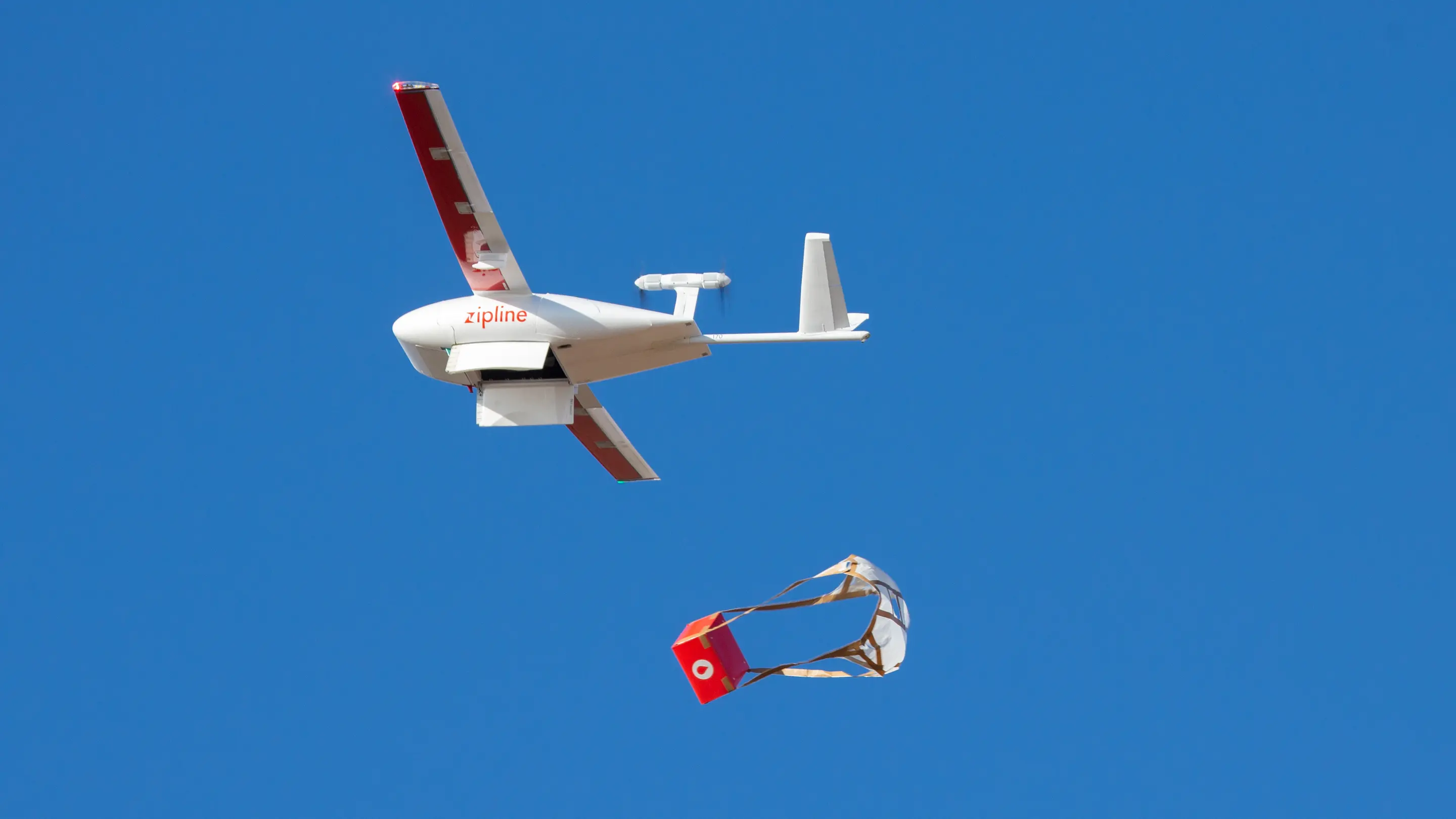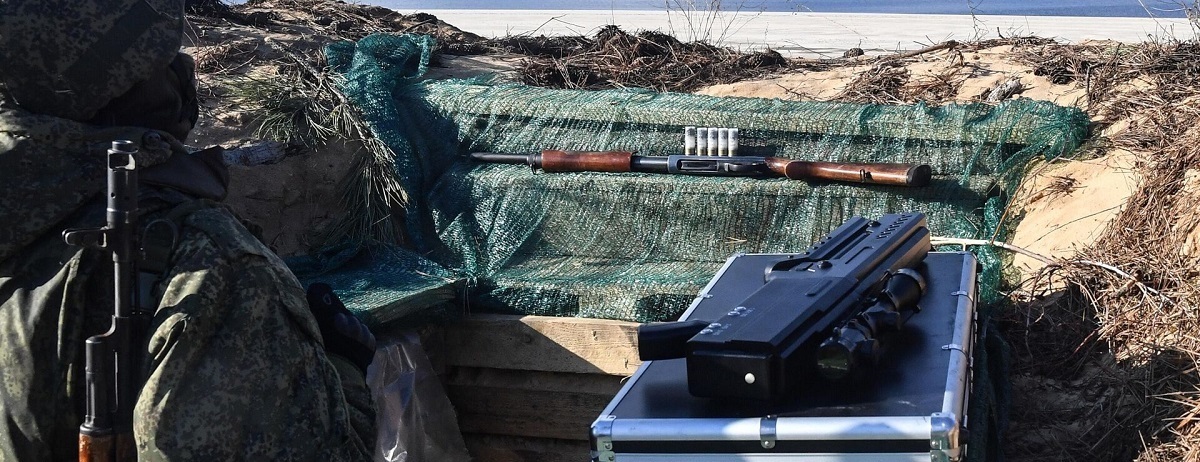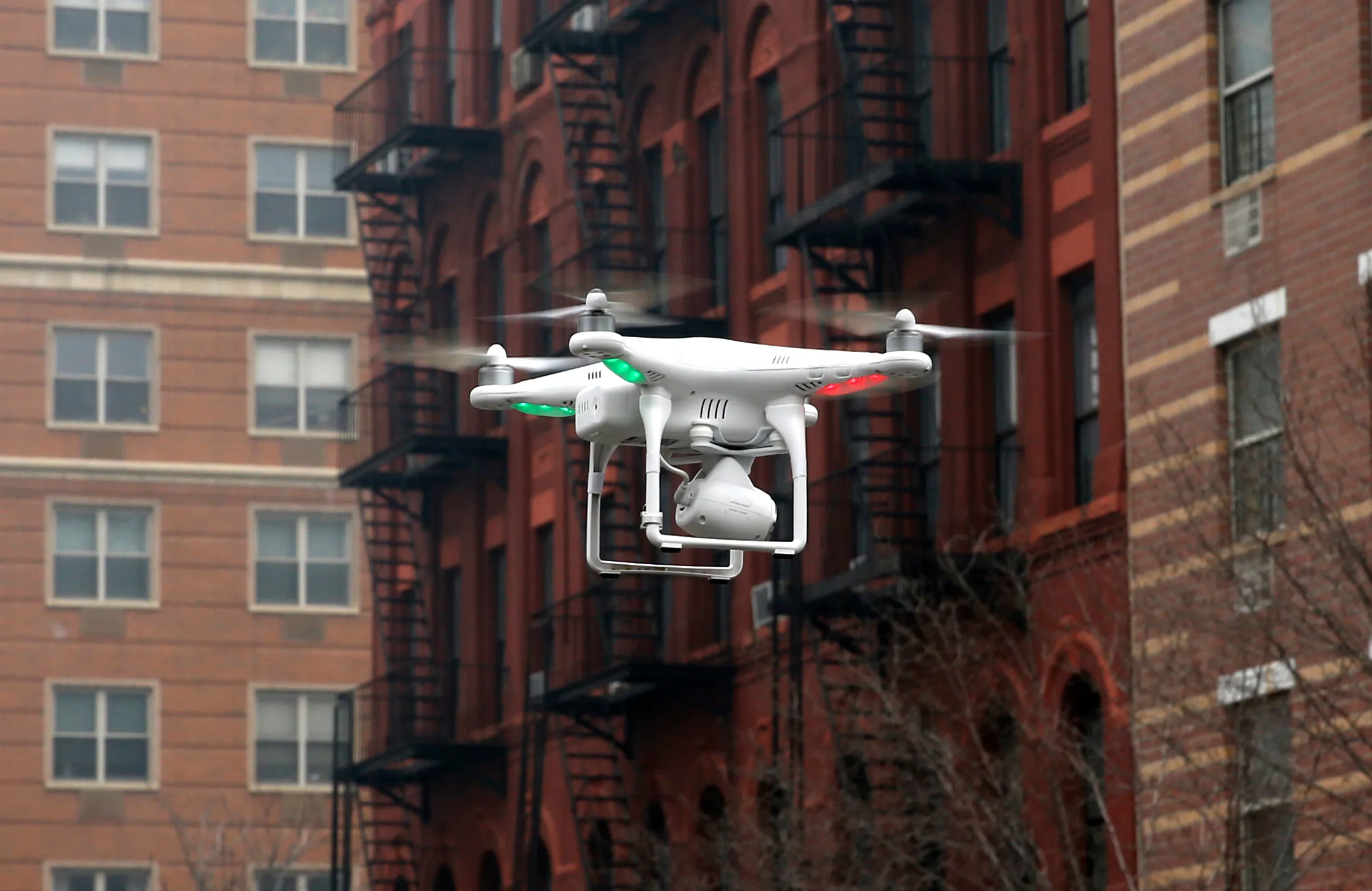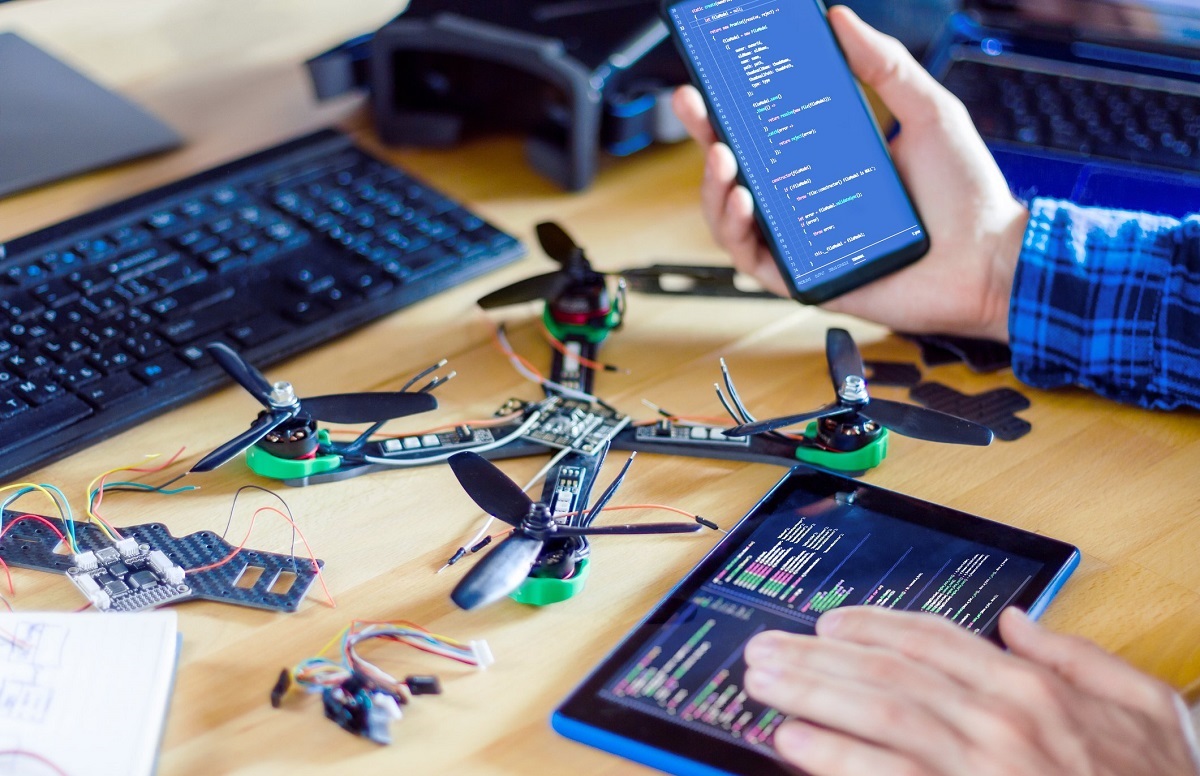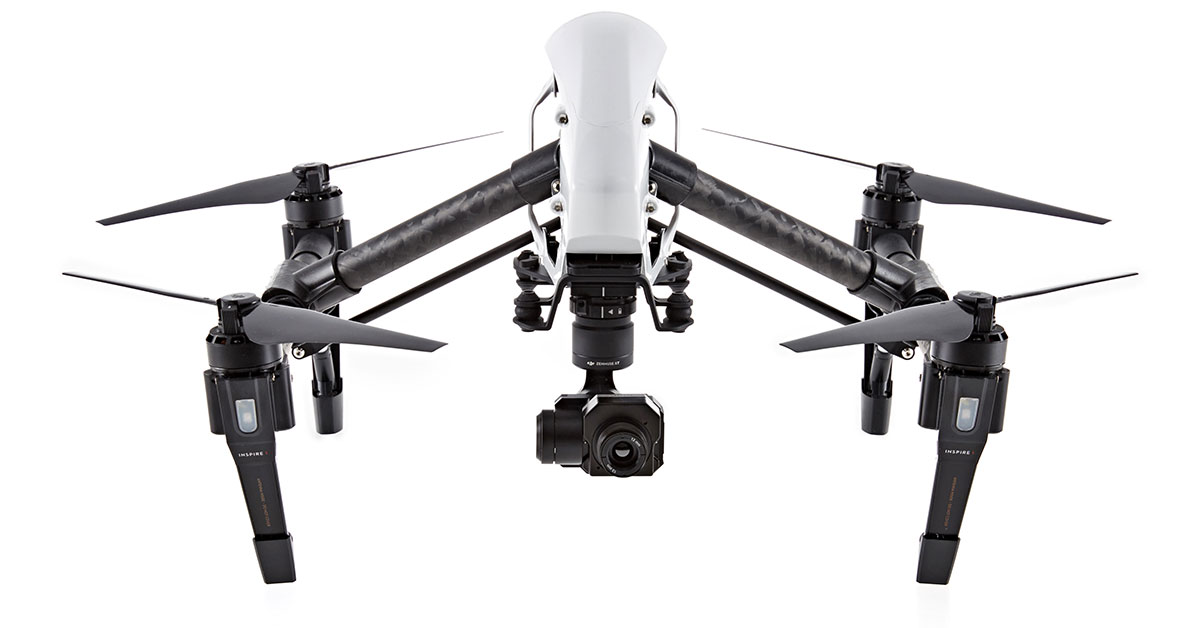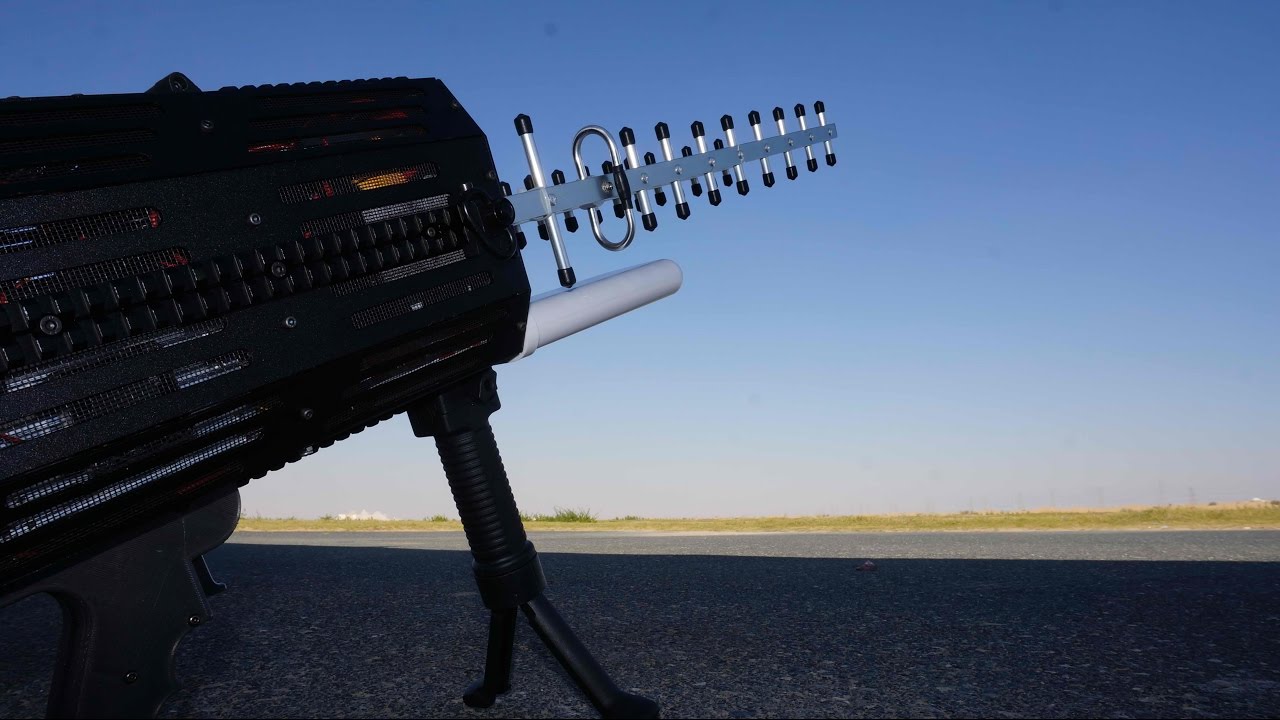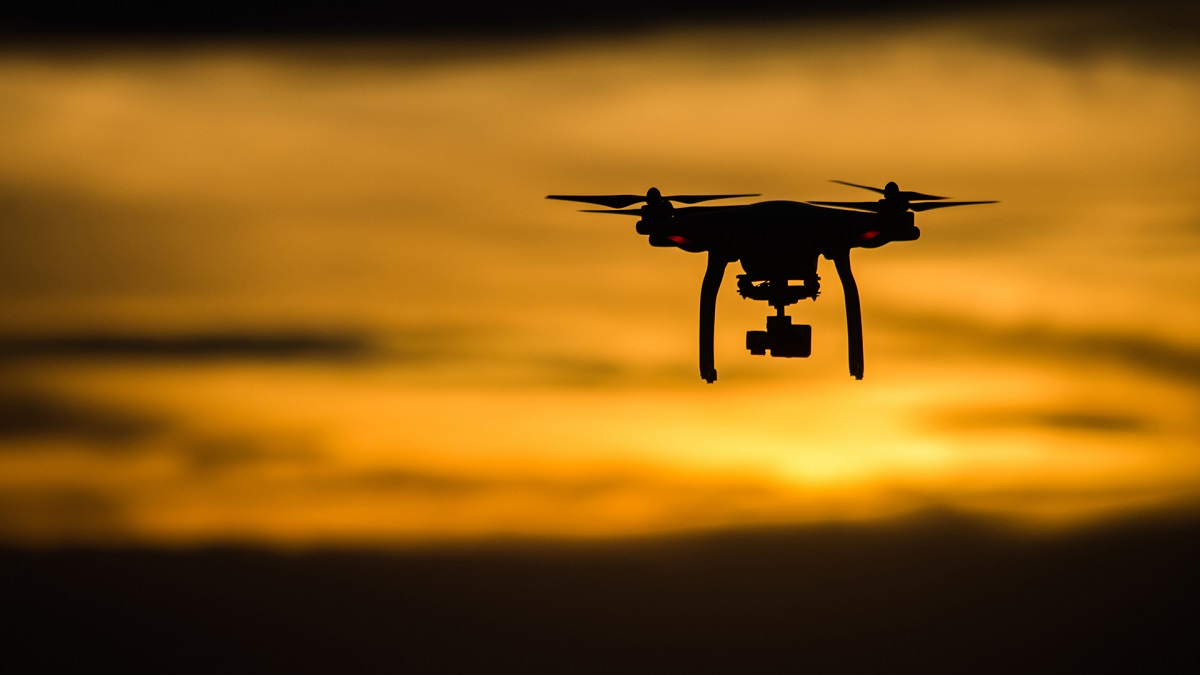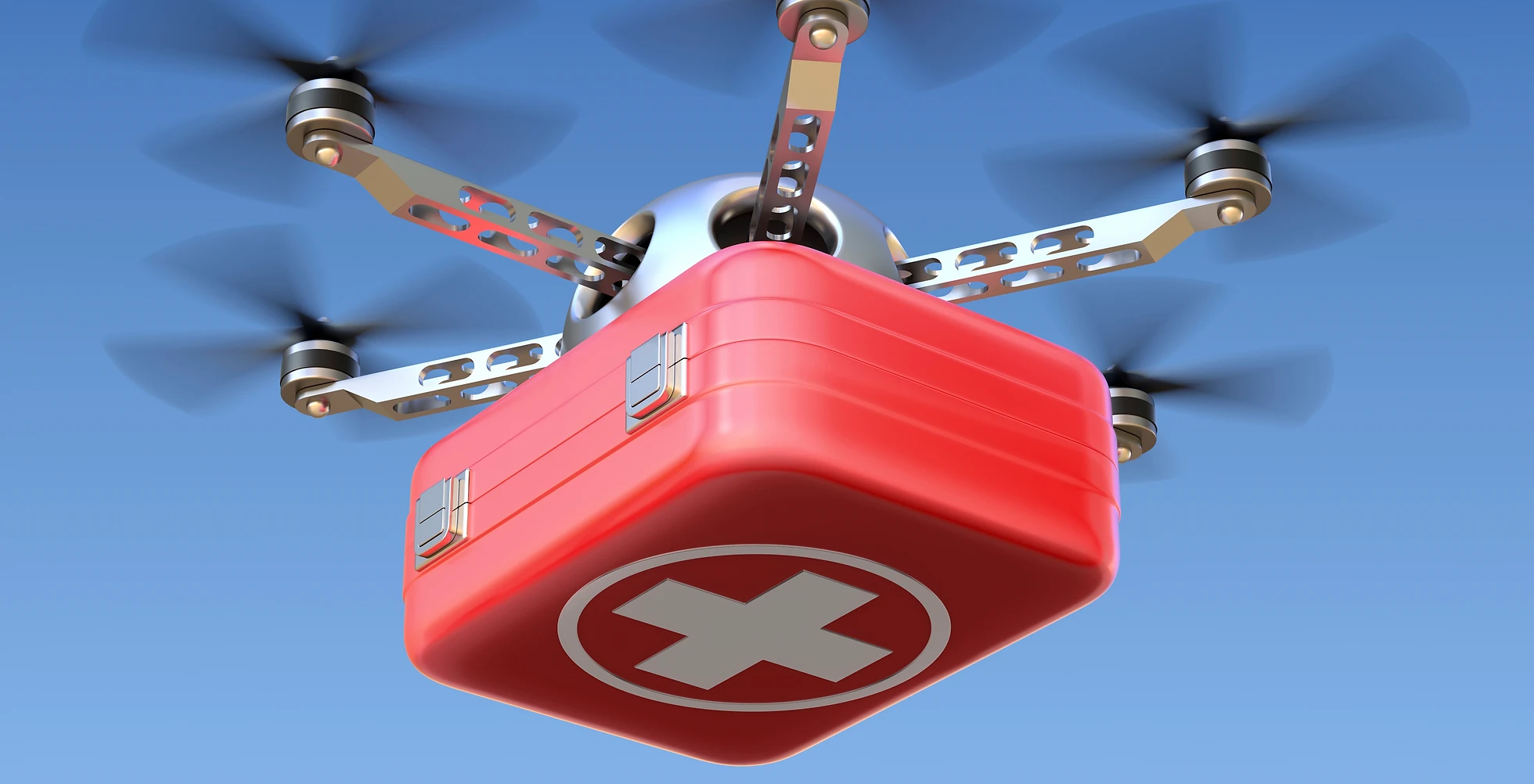Introduction
With the rise in popularity of drones, concerns about privacy, security, and safety have become more prevalent. Whether it’s the intrusive presence of a neighboring drone or the potential threat of unauthorized drone activity in restricted areas, being able to detect drones has become a necessity. The ability to identify and locate drones can allow individuals and organizations to take appropriate actions to mitigate any potential risks.
In this article, we will explore various methods and techniques for detecting drones. We will look at physical signs of drone activity, such as visual and auditory cues, as well as more advanced methods like RF scanning and infrared detection. We will also touch upon the legalities surrounding drone detection and the available drone detection apps.
Whether you’re concerned about your personal privacy, safeguarding sensitive information, or ensuring the security of your premises, understanding how to detect drones can provide you with peace of mind and the ability to take proactive measures to protect yourself and your assets.
It’s important to note that while detecting drones can be a useful tool, it’s essential to adhere to local laws and regulations when it comes to drone monitoring. Always consult with local authorities or legal experts to ensure your drone detection methods are within the boundaries of the law.
Now, let’s delve into the fascinating world of drone detection and explore the various techniques that can help you identify and locate drones.
Understanding Drones
Before we dive into the methods of drone detection, it’s important to have a basic understanding of what drones are and how they operate. Drones, also known as unmanned aerial vehicles (UAVs), are aircraft controlled either remotely by a human operator or autonomously by onboard computers.
Drones come in various shapes and sizes, ranging from small consumer quadcopters to larger commercial and military drones. They are equipped with multiple propellers, stabilizing sensors, cameras, and other sophisticated sensors or payloads.
One of the most common uses of drones is for recreational purposes, such as aerial photography, videography, and racing. However, they are also utilized in industries like agriculture, construction, filmmaking, surveillance, and even delivery services.
Most drones rely on GPS technology and onboard sensors to navigate and maintain stability. They transmit and receive signals to and from their operators, allowing them to receive commands and relay information back to the controller.
Understanding the capabilities and limitations of drones is crucial when it comes to detecting them. Drones can fly at varying altitudes, speeds, and distances, making them harder to detect visually or audibly, especially at higher altitudes.
Additionally, advancements in drone technology have led to the development of miniaturized and stealthy drones, which can be challenging to detect using conventional methods. These drones are equipped with quieter motors, low-profile designs, and advanced flight control systems that make them less conspicuous.
To effectively detect drones, it is essential to familiarize yourself with the characteristics and features typical to different types of drones. This knowledge will help you identify potential signs of drone presence and differentiate them from other flying objects, such as birds or remote-controlled toys.
Now that we have a basic understanding of drones, let’s explore the legal aspects of detecting drones and the importance of abiding by regulations in the next section.
Legalities of Drone Detection
Detecting drones raises important legal considerations that individuals and organizations must be aware of. While it can be tempting to take matters into your own hands to protect your privacy or security, it’s essential to ensure that your drone detection efforts comply with local laws and regulations.
The legality of detecting drones varies across jurisdictions, and it’s crucial to understand the specific laws in your country or region. In some places, actively detecting drones using RF scanners or other means may be considered eavesdropping or unauthorized surveillance, both of which are illegal.
It is advisable to consult with local authorities, legal experts, or even drone industry organizations to fully understand the legal boundaries before proceeding with any drone detection methods. They can provide guidance on permissible actions and help you stay within the confines of the law.
It’s also important to note that the legal principles surrounding drone detection are still evolving as the technology continues to advance. As a result, regulations and restrictions may change over time, and staying updated with current laws is essential.
When it comes to detecting drones in sensitive areas, such as airports, government buildings, or private properties, it is typically best to rely on authorized entities, like law enforcement or security agencies, who have the proper training and legal authority to handle such situations.
Cooperation with relevant authorities can help ensure that any detected drones are appropriately investigated or dealt with in accordance with the law. Reporting suspicious drone activity to the appropriate authorities can contribute to the overall safety and security of the community.
By understanding and abiding by the legal framework surrounding drone detection, you can protect yourself from potential legal consequences and work towards a safer and more regulated drone environment.
In the next sections, we will explore different techniques for detecting drones, while keeping in mind the legalities associated with each method.
Physical Signs of Drone Activity
When it comes to detecting drones, one of the most straightforward methods is to rely on physical signs and cues that indicate the presence of a drone in the vicinity. These signs can help you identify drone activity and prompt you to take appropriate action.
One of the first things to look out for is visual cues. Drones are typically visible during daylight hours, especially when they are flying at lower altitudes. Keep an eye out for small flying objects with multiple propellers that are not easily mistaken for birds or other traditional aircraft.
Common visual clues of drone activity include erratic flight patterns, sudden changes in direction, or hovering in one spot for extended periods. If you notice any of these characteristics, it’s likely that a drone is nearby.
Another physical sign to be aware of is the sound of the drone. Drones produce a distinct buzzing or whirring sound, which can help you locate their position. Listen for the sound of rotating propellers or the high-pitched hum produced by electric motors when trying to detect drones.
However, it’s important to note that advancements in drone technology have led to the development of quieter drones with noise reduction features. These drones may be harder to detect based solely on sound cues, especially if they are flying at higher altitudes or using stealth modes.
Additionally, keep an eye on the sky for unusual behavior from birds or other wildlife. Sometimes, birds may get startled or react to the presence of a drone, flying away or exhibiting signs of distress. This can indicate the presence of a drone in the area.
Remember that physical signs alone may not be definitive proof of drone activity, as there could be other explanations for observed behaviors. However, if you notice a combination of visual and auditory cues, it’s worth investigating further to confirm the presence of a drone.
In the next sections, we will explore more sophisticated techniques for drone detection, including the use of radio frequency scanners, drone detection apps, and infrared detection methods.
Listening for Drone Sounds
Sound can be a valuable tool when it comes to detecting drones, especially in situations where visual identification may be challenging. Drones produce distinct sounds that can help you locate their presence and determine their proximity.
When listening for drone sounds, it’s important to familiarize yourself with the typical noises drones make. Most drones are equipped with multiple propellers that create a buzzing or whirring sound when in flight. The sound intensity and pitch may vary depending on the drone’s size, design, and propulsion system.
To effectively listen for drone sounds, find a quiet environment without any significant background noises. This will allow you to focus on detecting the distinct sounds of the drone’s propellers or motors. Additionally, using a pair of noise-canceling headphones can help block out ambient noise and enhance your ability to detect the drone’s sound.
When listening, pay attention to the direction from which the sound is coming. Move around if necessary to pinpoint the source of the sound more accurately. This can help you determine the drone’s location and assess any potential threats or intrusions.
It’s important to note that the sound of a drone can vary based on its distance from you. As the drone gets closer, the sound will become louder and more distinct. However, as it moves further away, the sound may become fainter and blend with other environmental noises, making detection more difficult.
Keep in mind that advancements in drone technology have led to the development of quieter drones. Some models come equipped with noise reduction features or stealth modes, which can make them harder to detect based solely on sound cues. In such cases, combining listening techniques with other drone detection methods can increase your chances of successful detection.
Listening for drone sounds is a useful technique, especially in areas where visual identification may be limited or restricted. However, it’s important to complement this method with other detection methods for a more comprehensive approach to drone detection.
In the next sections, we will explore additional methods for detecting drones, including the use of radio frequency scanners, drone detection apps, and infrared detection methods.
Detecting Drones with Radio Frequency (RF) Scanners
Radio Frequency (RF) scanners are a popular and effective method for detecting drones. Drones, like many other electronic devices, emit RF signals that can be detected and analyzed using specialized equipment.
RF scanners work by scanning the radio spectrum and identifying signals that are specific to drones. These signals can include telemetry data, control signals between the drone and its operator, or even video transmission signals.
One of the primary advantages of using RF scanners for drone detection is their ability to detect drones regardless of their size, shape, or visual appearance. This makes them an invaluable tool in situations where visual or auditory cues may not be sufficient.
When using an RF scanner, it’s important to understand how to differentiate between legitimate drone signals and other RF devices that may be present in the area. Some common RF devices that can cause interference or false positives include Wi-Fi networks, wireless video cameras, and remote control toys.
To overcome this challenge, advanced RF scanners utilize sophisticated algorithms and signal analysis techniques to filter out unwanted signals and focus on identifying specific drone-related signatures.
Once a drone signal is detected, the RF scanner can provide information such as the drone’s frequency, signal strength, and sometimes even the drone model or manufacturer. This data can help determine the location of the drone and assist in taking appropriate action if necessary.
It’s important to note that in some jurisdictions, the use of RF scanners for drone detection may be subject to legal restrictions. As previously mentioned, consult local laws and regulations to ensure that your usage of RF scanning equipment is within the legal boundaries.
RF scanners are a powerful tool in the arsenal of drone detection methods. They offer a means to detect drones based on their RF emissions, providing a reliable method for identifying potential drone activity.
In the next sections, we will explore other techniques for drone detection, including the use of drone detection apps and infrared detection methods.
Using Drone Detection Apps
In today’s digital age, the prevalence of smartphones and smart devices has led to the development of various drone detection apps. These apps utilize the capabilities of mobile devices to detect and identify drone activity.
Drone detection apps work by leveraging different sensors and technologies present on smartphones, such as GPS, camera, microphone, and wireless connectivity. They analyze data captured by these sensors to detect and locate nearby drones.
One of the key features of drone detection apps is their ability to provide real-time alerts and notifications when a drone is detected. Users can receive immediate notifications on their smartphones, allowing them to take appropriate actions based on the situation.
These apps often rely on crowd-sourced data, with users contributing information about drone sightings and activity in their respective locations. This collective data helps create a comprehensive drone detection network and enhances the accuracy and reliability of the app’s detection capabilities.
Drone detection apps can utilize various detection methods, including RF scanning, audio analysis, and visual recognition algorithms. Some apps even offer augmented reality features that provide a live view of the drone’s location overlaid on the smartphone screen.
It’s important to choose a reputable and reliable drone detection app from trusted sources, as the effectiveness and features can vary between different apps. Look for apps that have positive user reviews, regular updates, and a track record of accuracy in their drone detection capabilities.
While drone detection apps can be a convenient and accessible tool for individuals, it’s crucial to understand their limitations. Factors such as the range of detection, environmental conditions, and the type of drones being detected can impact the app’s effectiveness.
Furthermore, it’s important to be mindful of privacy considerations when using drone detection apps. Some apps may collect and analyze data from the user’s device, such as location information, camera feed, or microphone recordings. Always review and understand the app’s privacy policy before using it.
Despite their limitations, drone detection apps provide an additional layer of protection and awareness when it comes to detecting drones. They offer a user-friendly and mobile solution for those interested in monitoring drone activity in their surroundings.
In the next sections, we will explore visual detection techniques, as well as infrared detection methods for detecting drones.
Visual Detection Techniques
Visual detection techniques play a crucial role in identifying and spotting drones. With the naked eye or aided by binoculars or telescopes, individuals can visually detect drones based on their physical appearance and movement.
When using visual detection techniques, it’s important to familiarize yourself with the typical characteristics of drones. Drones often have a distinct shape, with multiple propellers and a central body housing the necessary components. However, it’s important to note that drone designs can vary, and some may even resemble traditional aircraft or birds.
One way to enhance visual drone detection is to scan the sky systematically. Start from one side and methodically move your gaze across the visible area, focusing on different altitudes and distances. This method can help expose any potential drone presence.
Pay attention to any unusual movements or flight patterns that may indicate drone activity. Drones may exhibit behaviors such as hovering in one spot, flying in a straight line, or rapidly changing direction. By observing these patterns, you can gather valuable information about the drone’s behavior and potentially determine its purpose.
During visual detection, it’s essential to distinguish between drones and other aerial objects like birds, balloons, or remote-controlled aircraft. Taking note of specific details such as the size, speed, and stability of the object can help you differentiate between drones and other flying objects.
Keep in mind that visual detection techniques may be limited in certain situations, especially when drones are flying at higher altitudes, during unfavorable weather conditions, or in areas with obstructed visibility. In such cases, combining visual detection with other methods like RF scanning or infrared detection can provide a more comprehensive approach to drone detection.
Furthermore, advancements in drone technology have led to the development of smaller and stealthier drones, which are harder to detect visually. These drones may be designed with quieter motors, low-profile designs, or even camouflaged exteriors to blend into the surroundings.
Overall, visual detection techniques are an important tool for identifying drones. By familiarizing yourself with drone characteristics and using systematic scanning methods, you can improve your chances of visually detecting drones in your vicinity.
In the next section, we will explore another detection method: infrared detection, which can be particularly useful in low-light or nighttime conditions.
Infrared Detection Methods
Infrared (IR) detection methods offer an effective means of detecting drones, particularly in low-light or nighttime conditions when visual detection may be challenging. These methods rely on capturing the thermal energy emitted by objects, including drones, to identify their presence.
Infrared detection works by using specialized cameras or sensors that detect the heat signatures or temperature differences between objects in the environment. Drones, like any other object, emit heat, and this heat signature can be distinguished from the surrounding background to identify the presence of a drone.
One of the advantages of infrared detection is the ability to differentiate between drones and other objects, regardless of visual camouflage or lighting conditions. Drones typically generate a heat signature that allows them to be distinguished from birds, balloons, or other non-drone objects.
When using infrared detection methods, it’s important to understand the limitations of the technology. Factors such as distance, environmental conditions, and the size of the drone can affect the accuracy and range of the infrared detection system.
It’s worth noting that some advanced drones are equipped with technologies that help them reduce their heat signature and make them less detectable using infrared detection methods. These drones may utilize thermal insulation, heat dissipation systems, or specially designed materials to minimize their thermal output.
To enhance the effectiveness of infrared detection, it’s important to use the right equipment and optimize the settings based on the environment. Calibrating the infrared camera or sensor, adjusting the sensitivity levels, and maintaining a steady hand or stable mounting can help improve the accuracy of the detection.
It’s also crucial to take into consideration the laws and regulations regarding the use of infrared detection in your jurisdiction. In some areas, there may be restrictions on the use of infrared imaging for drone detection or other privacy concerns.
Infrared detection methods complement other drone detection techniques, such as visual detection and RF scanning, by providing an additional layer of detection capability, especially in low-light conditions or areas with limited visibility.
By leveraging the thermal energy emitted by drones, infrared detection methods offer a reliable means of identifying drones that may be otherwise difficult to detect using other methods alone.
In the next section, we will explore advanced techniques for drone detection, including the use of specialized equipment and technologies.
Advanced Techniques for Drone Detection
As the advancement of drone technology continues, so does the development of advanced techniques for drone detection. These techniques utilize specialized equipment and technologies to enhance the accuracy and effectiveness of drone detection.
One of the advanced techniques employed for drone detection is the use of acoustic sensors. These sensors are designed to detect and analyze the unique sound signatures produced by drones. By analyzing the acoustic patterns, the sensors can identify the presence and location of drones, even in noisy or crowded environments.
Another advanced technique involves the use of radar systems specifically designed for drone detection. Radar can accurately detect the presence and track the movement of drones by emitting radio waves and analyzing the reflected signals. This method is widely utilized in commercial and military contexts for airspace surveillance.
Some advanced drone detection methods utilize machine learning algorithms and artificial intelligence (AI) to improve detection accuracy. These algorithms are trained using vast amounts of data to recognize patterns and behaviors associated with drone activity. By continuously learning from new data, these systems can adapt and improve their detection capabilities over time.
In some cases, drone detection can also be achieved through specialized sensors that detect chemical or biological signatures emitted by drones. These sensors are typically used in high-security environments, where the detection of specific chemicals or substances associated with drones may indicate a potential security threat.
Furthermore, the integration of multiple detection methods, such as combining RF scanning, visual detection, and infrared sensors, can provide a more comprehensive and reliable approach to drone detection. By combining the strengths of different techniques, the chances of detection accuracy and range can be significantly increased.
It’s important to note that advanced drone detection techniques often require specialized equipment and expertise. They are commonly employed by government agencies, security firms, or organizations with specific security concerns. However, as technology continues to evolve, these advanced techniques may become more accessible to a wider range of users.
While advanced techniques offer enhanced capabilities for detecting drones, they may also have legal restrictions and privacy considerations. Before implementing advanced drone detection systems, it is crucial to understand and comply with local laws and regulations regarding their usage.
By leveraging advanced techniques for drone detection, individuals and organizations can improve their situational awareness, enhance security measures, and take appropriate action when necessary.
In the next section, we will conclude our exploration of drone detection methods and summarize the key takeaways.
Conclusion
Detecting drones has become increasingly important in today’s world, where their widespread use raises concerns about privacy, security, and safety. In this article, we explored various methods and techniques for detecting drones.
We started by understanding the basics of drones and their characteristics, which is crucial for effectively identifying them. From there, we delved into the legal considerations surrounding drone detection and the importance of abiding by local laws and regulations.
We then examined physical signs of drone activity, such as visual and auditory cues, which can provide initial indicators of drone presence. We explored the use of radio frequency (RF) scanners, which detect drone-specific signals, and discussed the utility of drone detection apps in providing real-time alerts and notifications.
Visual detection techniques can be an effective means of spotting drones, while infrared detection methods offer advantages in low-light or nighttime conditions. We also highlighted the use of more advanced techniques, including acoustic sensors, radar systems, and AI-powered algorithms, to improve the accuracy and range of drone detection.
It’s important to note that the effectiveness of each method may vary depending on factors such as environmental conditions, drone technology advancements, and legal restrictions.
In conclusion, detecting drones requires a combination of knowledge, awareness, and the application of appropriate techniques. By understanding the various detection methods available and adhering to legal guidelines, individuals and organizations can take proactive measures to identify and respond to drone activity in their surroundings, thereby ensuring privacy, security, and safety in an increasingly drone-populated world.









